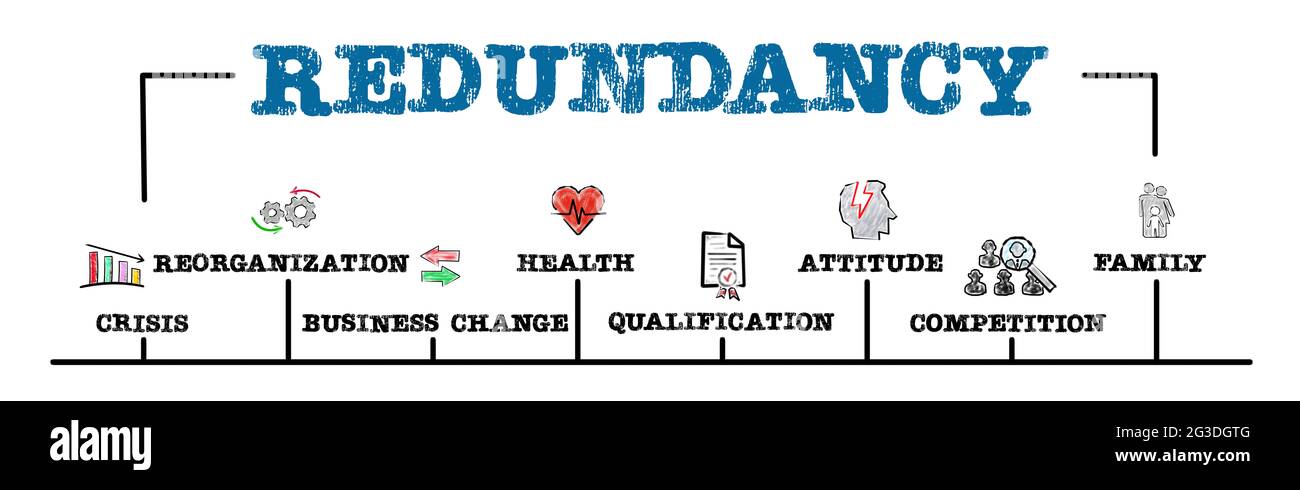Do Small Businesses Have to Pay Redundancy UK? Secret Truths You Need to Know
Do Small Businesses Have to Pay Redundancy UK? Secret Truths You Need to Know
Blog Article
Equipping Workers to Navigate Job Transitions Amid Firm Redundancy: Devices and Resources for Success
Browsing profession transitions among business redundancy is a multifaceted challenge that requires tactical preparation and a durable frame of mind. As organizations adapt and advance to transforming market dynamics, staff members usually discover themselves at a crossroads, unsure of exactly how to continue. In these times of unpredictability, having the right tools and sources at hand can make all the distinction in shaping an effective transition. From recognizing the redundancy process to leveraging networking possibilities, there are crucial actions that individuals can take to guide their occupations in a favorable direction. The trip of encouraging employees during such shifts is not just regarding survival yet also regarding thriving in the face of change.
Understanding the Redundancy Process
In navigating the complex terrain of company redundancies, a clear comprehension of the redundancy process is vital for employers and employees alike. Comprehending the redundancy procedure entails identifying the factors behind it, which can vary from technical developments to business restructuring or economic slumps. It is critical for workers to be aware of their rights and privileges during this period, consisting of redundancy pay, notice periods, and accessibility to retraining opportunities or occupation shift assistance.
For employers, efficient interaction and transparency throughout the redundancy procedure are important to keep staff member morale and depend on. Offering clear explanations for the redundancy decisions, supplying support solutions, and performing reasonable choice standards are important elements of a well-managed redundancy procedure. Furthermore, adherence to lawful demands and assessment commitments is critical to stay clear of potential legal obstacles and protect the business's track record.
Structure Strength and Coping Approaches
Navigating through the difficulties of company redundancies requires individuals to cultivate resilience and develop effective coping approaches in order to adjust and grow during periods of transition. Embracing a development state of mind, checking out difficulties as opportunities for learning and growth, can additionally enhance resilience and promote a proactive approach to browsing occupation shifts amidst firm redundancy. By proactively developing resilience and embracing efficient coping approaches, people can much better position themselves to efficiently navigate the intricacies of career changes with confidence and determination.
Checking Out Career Change Alternatives

Networking plays a vital role in uncovering possible profession possibilities. Engaging with sector experts, participating in networking events, and making use of on the internet systems can result in beneficial connections and understandings into different career paths. company redundancy. In addition, seeking guidance from occupation therapists or mentors can give valuable suggestions and support throughout this transitional period
Investigating numerous industries and functions can likewise assist people acquire a much better understanding of the work market and identify emerging trends and click to find out more in-demand abilities. This information can direct them in making notified decisions pertaining to possible job transitions and acquiring the required certifications or experience to go after new opportunities efficiently. By discovering a variety of occupation shift choices, individuals can properly relocate and navigate this difficult period in the direction of a rewarding and meeting job path.
Leveraging Networking and Assistance Solutions
Utilizing networking possibilities and well established support systems is important in helping with effective occupation transitions throughout times of company redundancy. Networking plays a crucial role in linking people with possible job opportunities, market insights, and valuable get in touches with that can open up doors to brand-new career paths. Involving with expert networks, attending market occasions, and getting to out to former associates or mentors can offer accessibility to unadvertised job settings and useful advice on navigating job changes efficiently.
Additionally, leveraging support group such as profession therapy solutions, staff member assistance programs, or industry-specific support groups can offer emotional support, support, and sources to people encountering redundancy. These support group can help in building confidence, enhancing job search techniques, and managing the emotional toll of task loss. Getting in touch with others who have experienced similar profession challenges can offer a sense of friendship and solidarity throughout this transitional duration.
Making Use Of Training and Ability Advancement

To efficiently make use of training and ability advancement possibilities, people should first assess their strengths, weaknesses, and job objectives. This self-assessment can aid them identify areas where added training is required to boost their employability. Furthermore, employees should research market trends and job demands to identify which skills are most beneficial and searched for by employers.
Additionally, looking for support from profession counselors, advisors, or market professionals can give understandings right into the read this article most helpful training programs. Continuous understanding and upskilling not only enhance one's bankability but also show a proactive strategy to personal and specialist development when faced with occupation transitions.
Verdict
To conclude, encouraging employees to browse job transitions amidst firm redundancy requires a detailed understanding of the redundancy procedure, resilience-building strategies, exploration of occupation change choices, leveraging networking and support group, and utilizing training and skill advancement. By giving employees with the necessary tools and resources for success, organizations can sustain their workforce in adapting to change and achieving long-term profession growth and development.
Navigating career transitions amidst company redundancy is a multifaceted challenge that requires strategic planning and a durable frame of mind. Embracing a development way of thinking, watching obstacles as chances for learning and development, can additionally improve resilience and foster a proactive approach to navigating career changes among business redundancy.In the middle of company redundancy, people facing job shifts are tasked with purposefully examining and exploring different professional pathways to adjust and progress effectively. By checking out a wide variety of career transition choices, people can efficiently relocate and browse this challenging period in the direction of a fulfilling and awarding profession course.

Report this page